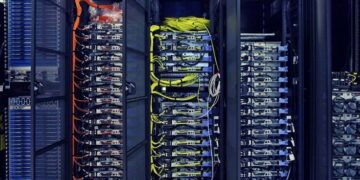Discover how VFX artists create realistic effects in movies using CGI, motion capture, green screens, and advanced software. Learn the process behind Hollywood’s stunning visuals.
Visual Effects (VFX) have revolutionized the film industry, enabling filmmakers to create stunning, larger-than-life visuals that were once impossible to achieve. From breathtaking landscapes in fantasy films to explosive action sequences in superhero movies, VFX artists play a crucial role in bringing cinematic magic to life.
In this article, we’ll explore how VFX artists create realistic effects in movies, the tools they use, and the techniques that make these effects so lifelike.
1. Understanding the Role of VFX in Movies
VFX involves digitally creating or enhancing visuals that cannot be captured during live-action filming. This includes creating imaginary worlds, creatures, explosions, or even modifying real-life scenes to add depth and realism. Some of the most iconic films, such as Avatar, The Avengers, and Inception, heavily rely on VFX to achieve their stunning visuals.
2. Pre-Production Planning for VFX
Before filming begins, VFX artists collaborate with directors and cinematographers to plan scenes that will require visual effects. This phase includes:
- Storyboarding: Creating detailed sketches of scenes to visualize how VFX will be integrated.
- Previsualization: Using 3D animation to create a rough draft of scenes, helping filmmakers plan camera angles and special effects.
- Concept Art: Designing creatures, environments, and effects that will later be digitally rendered.
3. Motion Capture and CGI for Realistic Character Animation
VFX artists use motion capture (MoCap) technology to create realistic character movements. This involves:
- Actors wear motion capture suits with sensors that track their movements.
- Mapping movements onto digital characters allows creatures like Gollum from The Lord of the Rings to move naturally.
- Facial motion capture for lifelike facial expressions, as seen in movies like Avatar and The Lion King (2019).
4. Green Screen and Chroma Keying
Green screens allow filmmakers to replace backgrounds with digitally created environments. The process involves:
- Filming actors in front of a green screen.
- Using chroma key software to remove the green background.
- Replacing the background with CGI environments, as seen in Doctor Strange and Harry Potter.
5. 3D Modeling and Texturing for Realistic Objects
VFX artists create 3D models of objects, buildings, or creatures using software like Blender, Maya, and ZBrush. Steps include:
- Creating wireframe models to outline the basic shape.
- Adding textures and details to make surfaces look realistic.
- Applying lighting and shadows to blend CGI elements with real-world footage.
6. Simulation Techniques for Natural Effects
To create realistic fire, water, explosions, and smoke, VFX artists use physics-based simulations. Techniques include:
- Particle simulations for dust, fire, and debris.
- Fluid dynamics simulations for realistic water movement.
- Destruction simulations for crumbling buildings and explosions.
7. Compositing: Merging CGI with Live Action
Compositing is the process of integrating CGI elements into live-action footage. VFX artists use software like Nuke and After Effects to:
- Blend CGI and real-world footage seamlessly.
- Match color grading and lighting so CGI elements appear natural.
- Add depth with shadows, reflections, and motion blur.
8. Rotoscoping and Masking
Rotoscoping is a technique where VFX artists manually trace over footage to separate elements for special effects. This is used for:
- Replacing backgrounds without a green screen.
- Adding CGI objects behind actors.
- Enhancing fight scenes by adding visual effects like glowing swords or energy blasts.
9. Matte Painting for Expansive Environments
Matte painting is used to create stunning landscapes and cityscapes. Artists paint detailed digital backgrounds that are later combined with live-action footage. This technique was used extensively in movies like Star Wars and The Hobbit.
10. The Final Touch: Post-Production and Rendering
Once all VFX elements are integrated, the final steps involve:
- Rendering: Converting CGI data into high-quality images.
- Color grading: Adjusting colors to match the film’s mood and tone.
- Sound design: Adding sound effects to complement the visuals.
Learn VFX and Animation from Experts
If you’re passionate about creating stunning visual effects, consider enrolling in a professional animation and VFX course in Nashik. You’ll gain hands-on experience with industry-standard software and techniques, preparing you for an exciting career in the film and gaming industry.
Final Thoughts
VFX is an essential part of modern filmmaking, transforming imagination into reality. From planning and motion capture to compositing and rendering, VFX artists use a combination of creativity and technology to create breathtaking movie experiences. If you dream of working in the world of special effects, start your journey today by mastering the art of VFX!























